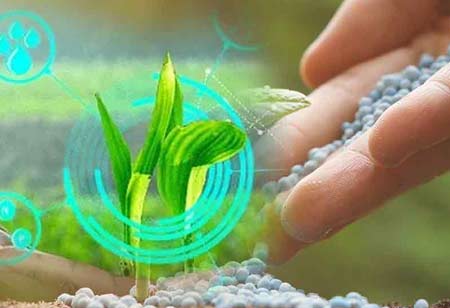Thank you for Subscribing to Agri Business Review Weekly Brief
The Role of Advanced Robotics in Vertical Farming
One of humankind's oldest industries, farming, is expected to be transformed by new technologies.

By
Agri Business Review | Tuesday, May 17, 2022
Stay ahead of the industry with exclusive feature stories on the top companies, expert insights and the latest news delivered straight to your inbox. Subscribe today.
Vertical farms will facilitate access to fresh produce in urban areas. Robotics technology is essential to the answer.
FREMONT, CA: One of humankind's oldest industries, farming, is expected to be transformed by new technologies. With the expansion of cities and the urbanization of many rural communities, populations worldwide are searching for ways to bring agriculture closer to where people live while also lowering their land footprint.
Vertical farming is the answer. Controlled indoor settings enable vertical farmers to boost agricultural yield without suffering as much crop loss from pests or environmental degradation. Furthermore, hydroponic systems are more water-efficient, making them attractive for arid locations. In addition, they occupy a small fraction of the acreage required by conventional farms and can be situated within the urban core, resulting in minimum transit expenditures.
Recent advancements in robotic technology offer intriguing solutions to many of the most challenging technical issues vertical farmers encounter. These technologies benefit existing automation methods that could make all the difference in a vertical farming system.
Planting: In numerous systems for vertical farming, planting occurs via an automated production line, with plant beds cycling through an assembly designed to replace empty spaces. However, this may not be the optimal strategy in all circumstances. If a plant bed must be secured, a robot could transport plants to the bed for placement.
Even in permanent manufacturing lines where plant beds travel along a line and are automatically filled, robots can fill beds of varying proportions and with various plant kinds by modifying their movements smoothly to accommodate the new application.
Examining: Technology is now advanced enough to evaluate the quality and growth of plants precisely. Even though vertical farms, which operate in a more contained environment, have fewer pests and crop damage issues, they must still be checked to ensure that the plants are thriving and healthy.
Robots outfitted with visual inspection technologies can monitor plants, track their development, and estimate when they will be ready for harvest.
Pruning: Certain plant species require attentive attention throughout their life cycle so that they do not become overgrown. Handling this typical step-by-step automation would be challenging because of the unpredictability of plant growth, and doing it by hand can be laborious. The same visioning technology that allows robots to inspect plants can also be used to prune them, assuring their continued health.





